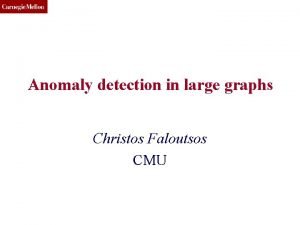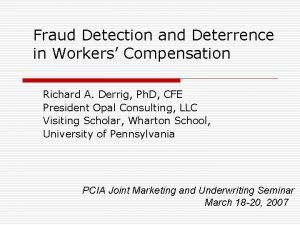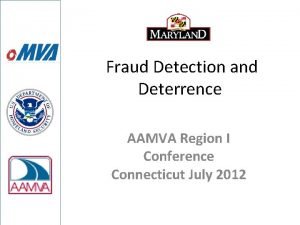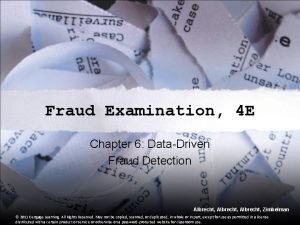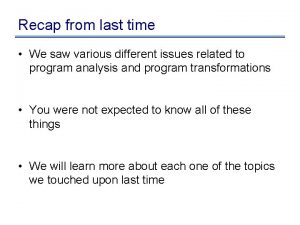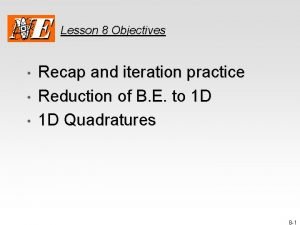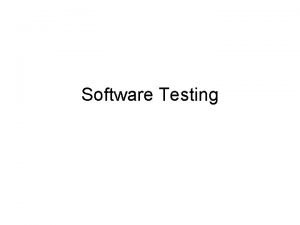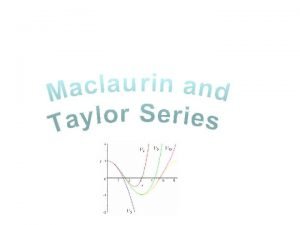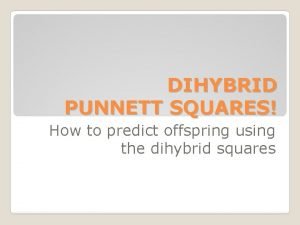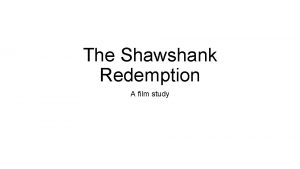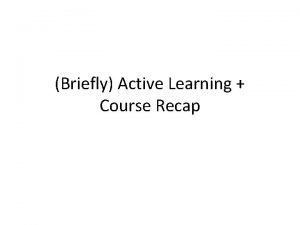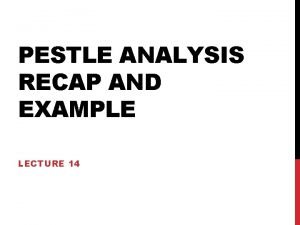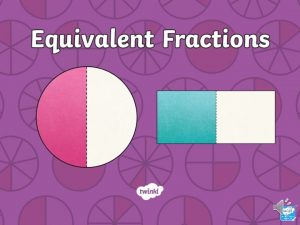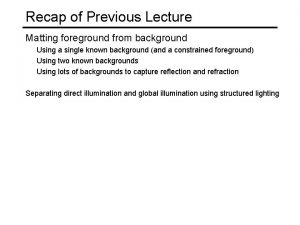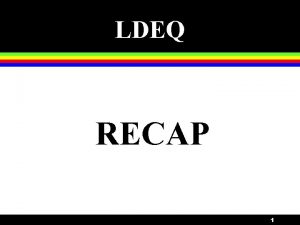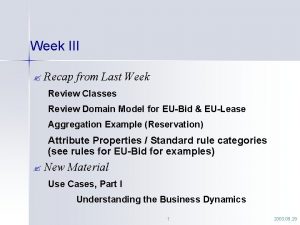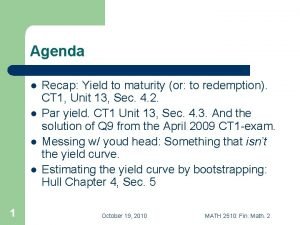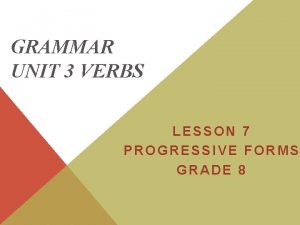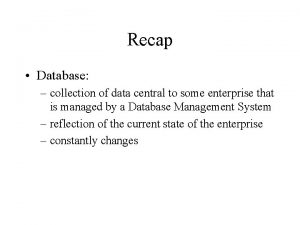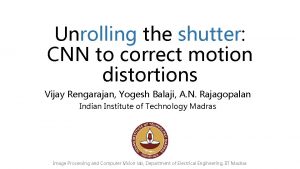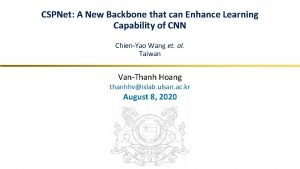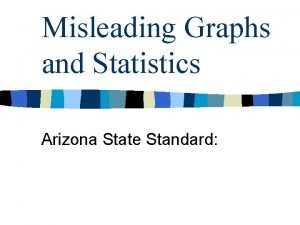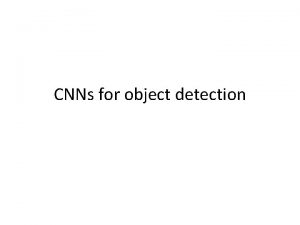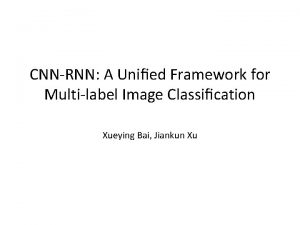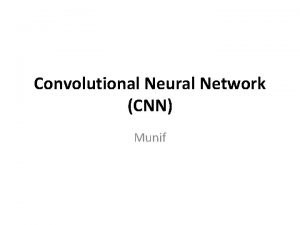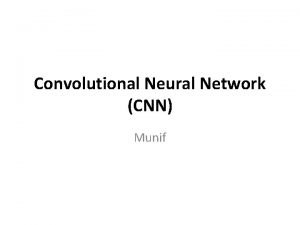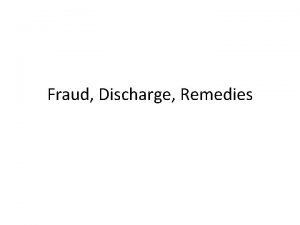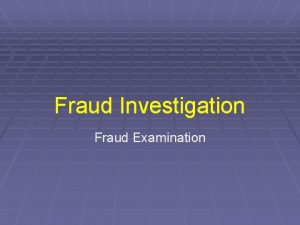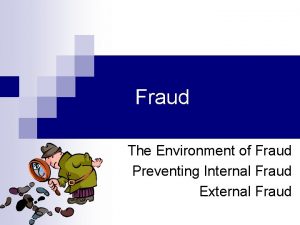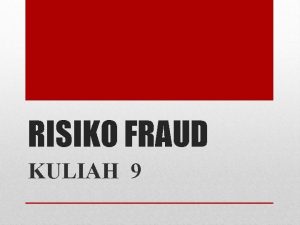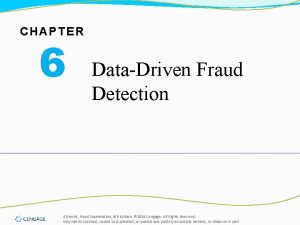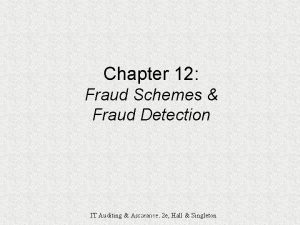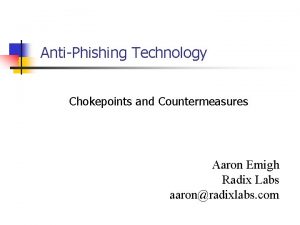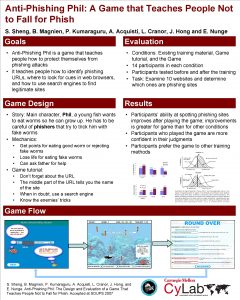Fraud Detection CNN designed for antiphishing Contents Recap















































- Slides: 47

Fraud Detection CNN designed for anti-phishing

Contents • • • Recap Phish. Zoo Approach Initial Approach Early Results On Deck

Recap • GOAL: build a real-time phish detection API public boolean isitphish(string URL){ }

Recap • Phishing is a BIG problem that costs the global private economy >$11 B/yr

Recap • Previous inspiration and vision based detection frameworks – J Chen, C Huang et al, Fighting Phishing with Discriminative Keypoint Features, IEEE Computer Society, 2009 – G Wang, H. Liu et al, Verilogo: Proactive Phishing Detection via Logo Recognition, Technical Report CS 2011 -0969 – S Afroz, R Greenstadt, Phish. Zoo: Detecting Phishing Websites by Looking at Them, Semantic Computing, 2011

Recap • Why Deep CNN’s? – Traditional computer vision has failed – Many objects – Sparse data – Performance – Adversarial problem

Recap • Bottom Line: detect targeted brand trademarks on web images

Recap • So we might miss this…

Recap • But we’ll catch this…

Recap • Bottom Line: detect targeted brand trademarks on web images – Accuracy – False Positives – Performance

Phish. Zoo Approach • Model Phish. Zoo (Afroz et al) approach – 1000 phishing examples from Phish. Tank. com – 200 ‘false positives’ sites from Alexa. com/topsites

Phish. Zoo Approach • Model Phish. Zoo (Afroz et al) approach – 1000 phishing examples from Phish. Tank. com – 200 ‘false positives’ sites from Alexa. com/topsites – ‘Profile Brands’

Phish. Zoo Approach • Model Phish. Zoo (Afroz et al) approach – Benchmark results: compare with pure images for “apples to apples” comparison

Initial Approach - Training • Collect all logo variants for ‘profiled’ brands, and synthesize training data – 11 brands

Initial Approach - Training • Collect all logo variants for ‘profiled’ brands, and synthesize training data – 11 brands – Each brand had multiple logo variants (27 total) • Eg. Paypal has five

Initial Approach - Training • Collect all logo variants for ‘profiled’ brands, and synthesize training data – 11 brands – Each brand had multiple logo variants (27 total) – Decouple text logos from picture logos

Initial Approach - Training • Collect all logo variants for ‘profiled’ brands, and synthesize training data – 11 brands – Each brand had multiple logo variants (27 total) – Decouple text logos from picture logos – Synthesize training data for each case by randomly re-cropping (100 per logo variant)

Initial Approach - Training • Collect all logo variants for ‘profiled’ brands, and synthesize training data – 11 brands – Each brand had multiple logo variants (27 total) – Decouple text logos from picture logos – Synthesize training data for each case by randomly re-cropping (100 per logo variant) – Each re-cropping is done from full screen

Initial Approach - Training • Collect all logo variants for ‘profiled’ brands, and synthesize training data • Use 2000 Image. Net sample for false positives

Initial Approach - Training • Collect all logo variants for ‘profiled’ brands, and synthesize training data • Use 2000 Image. Net sample for false positives • Install Caffe and use standard ILSVRC model – Python interface – CPU mode – bvlc_reference_caffenet

Initial Approach - Training • Collect all logo variants for ‘profiled’ brands, and synthesize training data • Use 2000 Image. Net sample for false positives • Install Caffe and use standard ILSVRC model • Generate fc 7 features using pre-trained ILSVRC model to train SVM – Similar approach to Simonyan et al – Use sklearn’s multi-class SVM – Apply grid search to find optimal C and gamma

Initial Approach - Testing • Get Phish. Zoo data from Sadia et al. – Sadia sent Phish. Zoo dataset that was ‘similar’ to one used in paper; contains 945 phish pages – 730 of the 945 contained brand logo images – 730 set consists of replicates of smaller set of 23 logo images

Initial Approach - Testing • Get Phish. Zoo data from Sadia et al. • 8000 Image. Net sample for false positives

Initial Approach - Testing • Get Phish. Zoo data from Sadia et al. • 8000 Image. Net sample for false positives • Apply sliding window search for testing – Four degrees of freedom [x, y, scale, shape] • Vertical and horizontal stride lengths of 5 pixels • 5 different scales ranging from 0. 3 to 0. 9 the height • 5 different box shapes

Early Results • Detect 18/23 logo images accurately (78%)

Early Results • Detect 18/23 logo images accurately (78%) – Detection errors

Early Results • Detect 18/23 logo images accurately (78%) • False positive on the sliding window images in 5 cases

Early Results • Detect 18/23 logo images accurately (78%) • False positive on the sliding window images in 5 cases

Early Results • Detect 18/23 logo images accurately (78%) • False positive on the sliding window images in 5 cases • No false positives on the 8000 Image. Net sample

Early Results • Performance – CNN + SVM runs ~ 250 ms/image on CPU – Sliding window with 4 degrees of freedom running on 200 x 200 image can search ~10^6 sub-images – Lesson: CPU-mode + sliding window = death

Early Results • Observations – All of the detection errors were < 25 pixels; the smallest training example is ~40 pixels

Early Results • Observations – All of the detection errors were < 25 pixels; the smallest training example is ~40 pixels – Our big mistake: used Image. Net samples to train/test model on negative examples that were used to pre-train the ILSVRC model!

Early Results • Our big mistake: used Image. Net samples to train/test model on negative examples that were used to pre-train the ILSVRC model! – SVM grid search had perfect cross validation region, should have been a give away

On Deck • Fix mistake; get ‘other’ data for false positive training

On Deck • Fix mistake; get ‘other’ data for false positive training • Synthesize training data at the scale that the human eye can detect trademarks

On Deck • Fix mistake; get ‘other’ data for false positive training • Synthesize training data at the scale that the human eye can detect trademarks • Synthesize data for adversarial effects

On Deck • Fix mistake; get ‘other’ data for false positive training • Synthesize training data at the scale that the human eye can detect trademarks • Synthesize data for adversarial effects

On Deck • Fix mistake; get ‘other’ data for false positive training • Synthesize training data at the scale that the human eye can detect trademarks • Synthesize data for adversarial effects • Use training data that is graphically rendered, not photographed data

On Deck • Fix mistake; get ‘other’ data for false positive training • Synthesize training data at the scale that the human eye can detect trademarks • Synthesize data for adversarial effects • Use training data that is graphically rendered, not photographed data

On Deck • Data 2. 0: download phish pages directly from Phish. Tank. com database (~1, 500/day)

On Deck • Data 2. 0: download phish pages directly from Phish. Tank. com database (~1, 500/day) • Real web-image data 100 -1000 x phish size

On Deck • Data 2. 0: download phish pages directly from Phish. Tank. com database (~1, 500/day) • Real web-image data 100 -1000 x phish size • CPU GPU (250 ms/image 1 ms/image)

On Deck • Data 2. 0: download phish pages directly from Phish. Tank. com database (~1, 500/day) • Real web-image data 100 -1000 x phish size • CPU GPU (250 ms/image 1 ms/image) • Sliding window R-CNN – 10^6 regions/image 10^2 or 10^3/image – Koen van de Sande’s code available on Caffe – May re-use own region proposal code

On Deck • Data 2. 0: download phish pages directly from Phish. Tank. com database (~1, 500/day) • Real web-image data 100 -1000 x phish size • CPU GPU (250 ms/image 1 ms/image) • Sliding window R-CNN • Try sliding cascade approach – eg. color histograms, Haar filters, (Farfade et al. http: //arxiv. org/abs/1502. 02766)

On Deck • Target for API (big picture) Daily measured on 1, 500 – Accuracy* (99. 9%) Phish. Tank examples and 1, 000+ web images – False Positives (2%) – Performance (<10 ms/page) *Accuracy defined as sites using trademarked visual content illicitly

On Deck • Target for API (big picture)

On Deck • Finalists at Hi-Tech Venture Challenge • April 23 rd at 4 pm in Davis Auditorium
 How do fraud symptoms help in detecting fraud
How do fraud symptoms help in detecting fraud Cascade r cnn
Cascade r cnn Fraud detection
Fraud detection Workers compensation fraud detection
Workers compensation fraud detection Fraud detection conference
Fraud detection conference Data driven fraud detection
Data driven fraud detection Sequence diagram for credit card fraud detection
Sequence diagram for credit card fraud detection Saw recap
Saw recap Public transportation essay
Public transportation essay What is the purpose of an iteration recap?
What is the purpose of an iteration recap? Recap accounting
Recap accounting Black box recap
Black box recap Recap introduction
Recap introduction Bracket power rule
Bracket power rule Punnett square foil
Punnett square foil Summary of shawshank redemption
Summary of shawshank redemption Recap indexing scans
Recap indexing scans The crucible act 1 recap
The crucible act 1 recap Briefly recap
Briefly recap Recap intensity clipping
Recap intensity clipping Example of recap
Example of recap Fractions recap
Fractions recap Recap introduction
Recap introduction Recap background
Recap background Summarize chapter 8 of the great gatsby
Summarize chapter 8 of the great gatsby Ldeq recap
Ldeq recap Just a quick recap of what we discussed
Just a quick recap of what we discussed Logbook recap example
Logbook recap example 60 minutes recap
60 minutes recap Let's recap
Let's recap Recap
Recap Recap from last week
Recap from last week Non cognitivism
Non cognitivism Recap poster
Recap poster Segmented pricing
Segmented pricing Key points of romeo and juliet
Key points of romeo and juliet Ytm recap
Ytm recap Perfect lesson 7
Perfect lesson 7 Recap database
Recap database X axis on a graph
X axis on a graph The crucible act 1 socratic seminar questions
The crucible act 1 socratic seminar questions Mesh cnn
Mesh cnn Cnn
Cnn Cspnet
Cspnet Misleading graphs cnn
Misleading graphs cnn Font detector
Font detector Cnn
Cnn Beam search
Beam search


